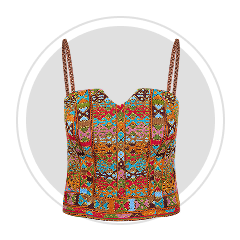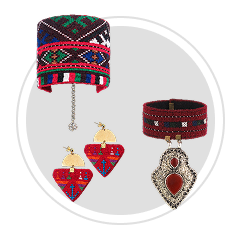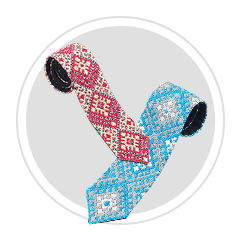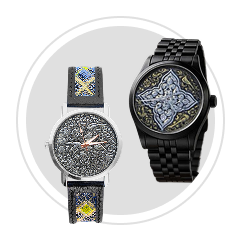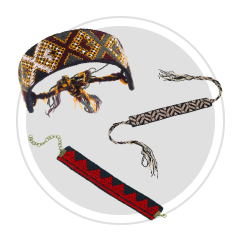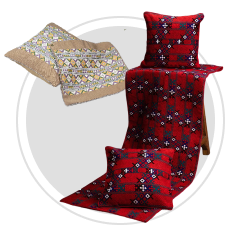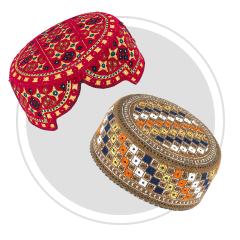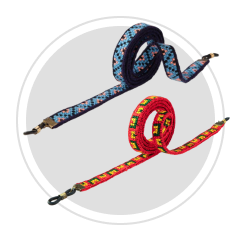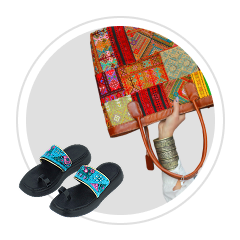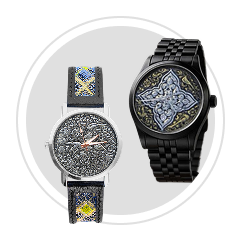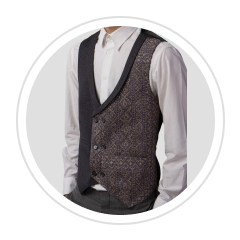The art of Balochistan embroidery is a treasure trove of taste, elegance and sustainability that is rooted in the history and culture of this land. More than a simple stitch, Baloch embroidery is a comprehensive mirror of the life, beliefs, aspirations and aesthetics of Baloch women. Every pattern, every color and every stitch tells a story; a story of vast deserts, soaring mountains, a people with a warrior spirit and a heart full of art. This art not only adorns local clothes, but also symbolizes the identity and cultural authenticity of a region that has always stood against the storm of events. History and Origin: Deep Roots in the Desert The exact date of the formation of Balochistan embroidery is not known, but historical and archaeological evidence shows that this art has a long history. Some believe that this art has been prevalent in the region since pre-Islamic times and was formed under the influence of neighboring civilizations and ancient nomads.
What is certain is that needlework has always been an inseparable part of the lives of Baloch women and has been passed down from generation to generation. This art is not only a skill, but also a precious heritage that comes to life and continues with every stitch. In the past, needlework was part of the dowry of Baloch brides and every girl learned this art from her mother and grandmother from childhood. The patterns and designs have been a symbol of wishes for a life together, fertility and happiness. This tradition has more or less survived to this day and Baloch needlework has a special place in local ceremonies and celebrations. Characteristics and Features: Colors from nature, designs from the creative mind Balochistan needlework is distinguished from other types of needlework due to its unique characteristics: Designs and motifs: Baloch needlework motifs are often geometric, abstract and inspired by nature. Flowers, trees, birds, animals, and cosmic elements such as the moon and stars are simplified in a unique way using geometric shapes. Each of these motifs has its own meaning and symbolizes the beliefs and aspirations of the people of the region. For example, some designs symbolize protection from the evil eye, while others symbolize blessings and abundance. The use of cheerful and vibrant colors is a prominent feature of Balochi embroidery. Red, orange, green, blue, yellow, and black are used abundantly in these designs. These colors often contrast with each other, creating an eye-catching and energetic effect. The use of natural silk threads gives these colors a special shine. A variety of traditional stitches are used in Balochi embroidery. Stitches such as chain stitch, stitch, stem stitch, satin stitch and full stitch are among the common stitches in this art. The skill and precision of the embroiderer in putting these stitches together creates a complex and beautiful work. Fabric and thread: Generally, cotton and linen fabrics with a relatively coarse texture are used as the canvas. The threads used are also often made of natural silk, which gives a special effect due to its shine and durability. Today, synthetic and mercerized threads are also used, but the originality of working with natural silk is preserved. Applications and types: From clothing to decoration, Balochi needlework is mainly used to decorate women’s local clothes. Long women’s shirts (jamg), cuffs, hems and even trousers are adorned with this art. Each part of the garment has its own pattern and design, and their overall combination is a symbol of the culture and social status of the individual. In addition to clothing, Balochi embroidery is also used to decorate other items and objects:
Bags and Backpacks: Handbags and backpacks with Balochi designs have a special and traditional look. Tablecloths and Runners: This art can add to the beauty and value of tablecloths and runners and create a traditional atmosphere in the home. Jewelry: In recent years, some artists have used Balochi embroidery to make jewelry such as necklaces, earrings, and bracelets. Art Paintings: Exquisite Balochi embroidery can be displayed as art paintings in homes and galleries.
Balochistan embroidery, more than an art, is an integral part of the cultural and economic identity of the region. This art is a source of income for many Baloch women and helps preserve traditions and pass on knowledge from generation to generation. However, Balochistan needlework also faces challenges:
Decline in skilled embroiderers: With changing lifestyles and the introduction of cheap goods, the number of skilled embroiderers is decreasing. Inadequate support: This valuable art needs more support from the government and cultural institutions to find its true place in the global market. Copying and poor quality: Unfortunately, some poor quality and machine-made copies of Baloch designs are damaging the reputation of this art.

